NOTE: I wrote this post back in the summer, and somehow never posted it. As it happens I was out of stock again, again loaded with stock-making goodies, and we had been promised yet another wretched weather weekend. So this is how I spent my Saturday. Here’s the original essay. Enjoy!
I woke up this morning with 2 things on my mind: carrot butts and rain.
See, my friends BG and JW are hosting a big birthday party for JW’s dad this afternoon, and I offered to make a couple of vegetable platters for them. I wish I could say that my offer was motivated purely by altruism, but it wasn’t. The fact is, I dearly love to make vegetable platters whenever possible because it means I can keep all those vegetable trimmings for myself. (That’s a bona fide food nerd confession, right there.) Add to that a monsoon–compliments of Hurricane Barry–Wimbledon on the television, some bonus space in the freezer, and BAM! I have the perfect vegetable stock-making day. I love it when a plan comes together.
Coincidentally, I have 2 roasted chicken carcasses and some pan drippings in the freezer from a couple of weeks ago. So right now both chicken stock (aka, chicken bone broth for those of you hipper than I) and vegetable stock are simmering merrily away on the stove and making my house smell wonderful. Later I will freeze it all and use it for soups and sauces and gravies.
Stock is silly easy and using homemade stock ups your cooking game A LOT. It really is far superior to the commercial stuff, both in taste and nutrition. It also appeals to my frugal side because it’s practically free.
Wait, what?
You didn’t know I had a frugal side?
HAHAHA! I know, right?
Vegetable Stock
The art of vegetable stock has a lot to do with what you don’t put in it. No broccoli, cauliflower, or purple cabbage (green cabbage is great, though). No rotting or slimy vegetables, no beets (unless you want very bloody-looking stock), no asparagus unless you want asparagus stock–the asparagus flavor totally takes over. I don’t use regular potatoes (too starchy–makes stock cloudy), but I have had good luck with sweet potato skins. Strong greens like turnip greens or collards are a no go, but I do use lettuce if I have it. I save parsley and cilantro stems to throw in. Wrinkly apples are fair game–no seeds, though. A little lemon or lime juice is okay, but no seeds, or rind either, or your stock will be very bitter. Squashes–both summer and winter–are fine. I always add onion skins, but not purple onion skins. You can collect vegetable odds and ends for a week or so in the fridge until you’re ready to make stock if you’d like.
Today I used:
2 lbs. scrubbed carrots’ worth of peels and ends–plus any other scraps from cutting them into pretty carrot sticks
The scraps from 2 large cucumbers: some skin, ends, and mis-cut pieces
Tops and ends from a couple of red and yellow bell peppers, no seeds or white pith
A few sad ends of scallions
½ of a small bunch celery that had wilted, including leaves and the base, any icky stuff cut off
Several small, wrinkly, garden tomatoes, quartered
Some droopy leaf lettuce
¼ bunch of wilting cilantro
About the same amount of parsley that was headed into decline
⅓ of a very large sweet onion with the papery skin
The juice of ½ a lemon–no seeds or pith
1 t. sea salt
I usually add mushroom stems and clean eggshells if I have them–I didn’t have any today.

Put all the vegetable odds and ends in a pot and cover with cold water. Bring to a boil then turn the heat to low. Simmer for hours until the vegetable matter is a soggy, sloppy mess and the volume is reduced by at least a third. Cool, strain, discard solids–those are great for the compost, by the way. Package the stock for the freezer in amounts that make sense to you. I use quart freezer bags and freeze the stock flat in quart and pint amounts. Use to cook rice, potatoes, soups, or in place of water in literally nearly anything. Use it instead of water to make the best pork chop pan gravy you’ve ever eaten. Drink a mug of it hot (add salt and pepper to taste) if you’re feeling puny.
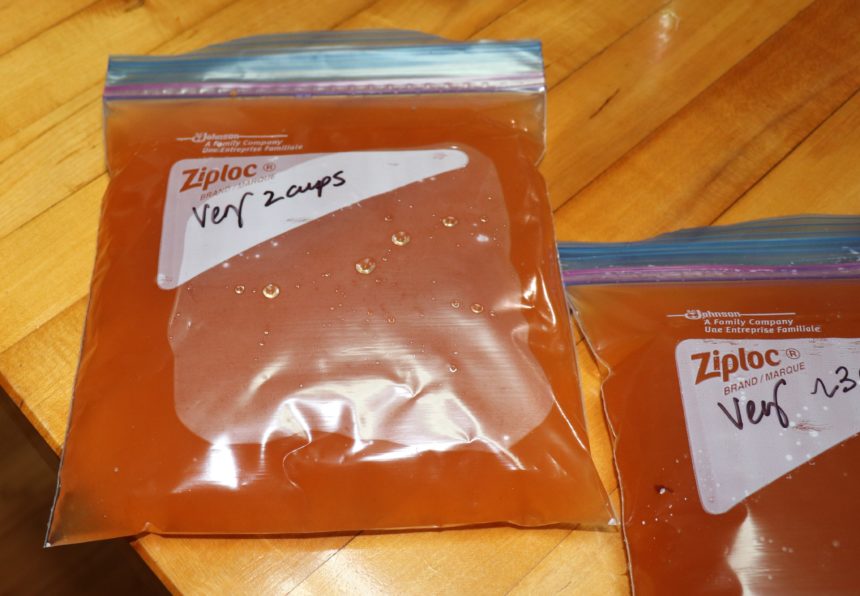
Chicken Stock
I try to wait until I have two chicken carcasses in my freezer to make stock. I prefer to use both skin and bones from a roasted chicken or even a plain rotisserie chicken from the grocery, plus wingtips and chicken backs if I have them. You can include chicken necks, gizzards, and hearts, but save the livers for something else. I put all this in a freezer bag in my kitchen freezer until I have collected enough to make a pot of stock.
I add basic aromatics to my chicken stock–usually onion, carrot, celery, parsley–and I put in a little sea salt and some black peppercorns. I add a splash (maybe a tablespoon or so?) of apple cider or wine vinegar. The acidic vinegar leaches minerals from the bones and yields a richer, more nutritious stock.
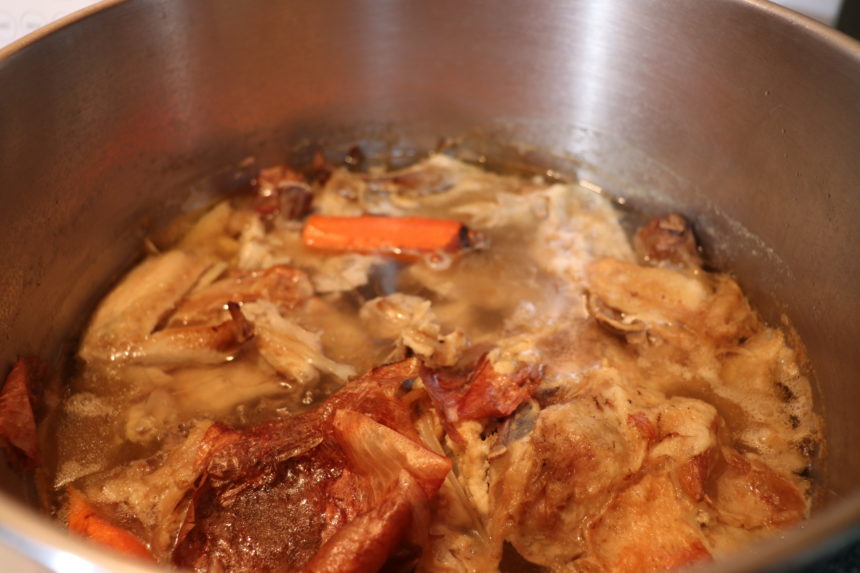
Here is what’s in the stock pot today:
Chicken carcasses including bones, skin, gristle, etc. from two roast chickens, the drippings from the pan I roasted the chickens in, plus an uncooked chicken back
A splash of vinegar apple cider vinegar
2 t. sea salt
7 or 8 black peppercorns
2 carrots
2 stalks of celery
Several sprigs of parsley
Put all the ingredients into a stock pot and cover with cool water. Bring to a boil and turn the heat down to a gentle simmer. Simmer for 2 or 3 hours at least, but preferably more. Any meat should be falling off the bones, and vegetables should be mushy. Cool and strain off the solids (see NOTE). Package for the freezer in amounts you’ll use–quarts, pints, cups or even in 1-ounce portions in an ice cube tray if that makes sense for you.
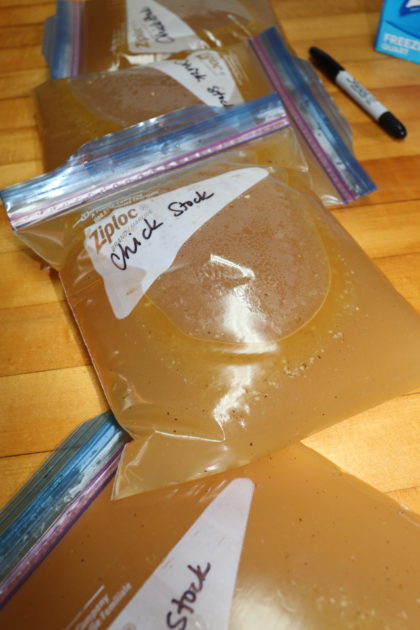
NOTE: I always save the solids from chicken stock and carefully pick out the bones–this doesn’t take long. What’s left makes a great treat for your dog or cat. I put some on top of their regular food and they absolutely love it, plus it’s good for them. Each batch should give you enough for several happy dog and cat days.


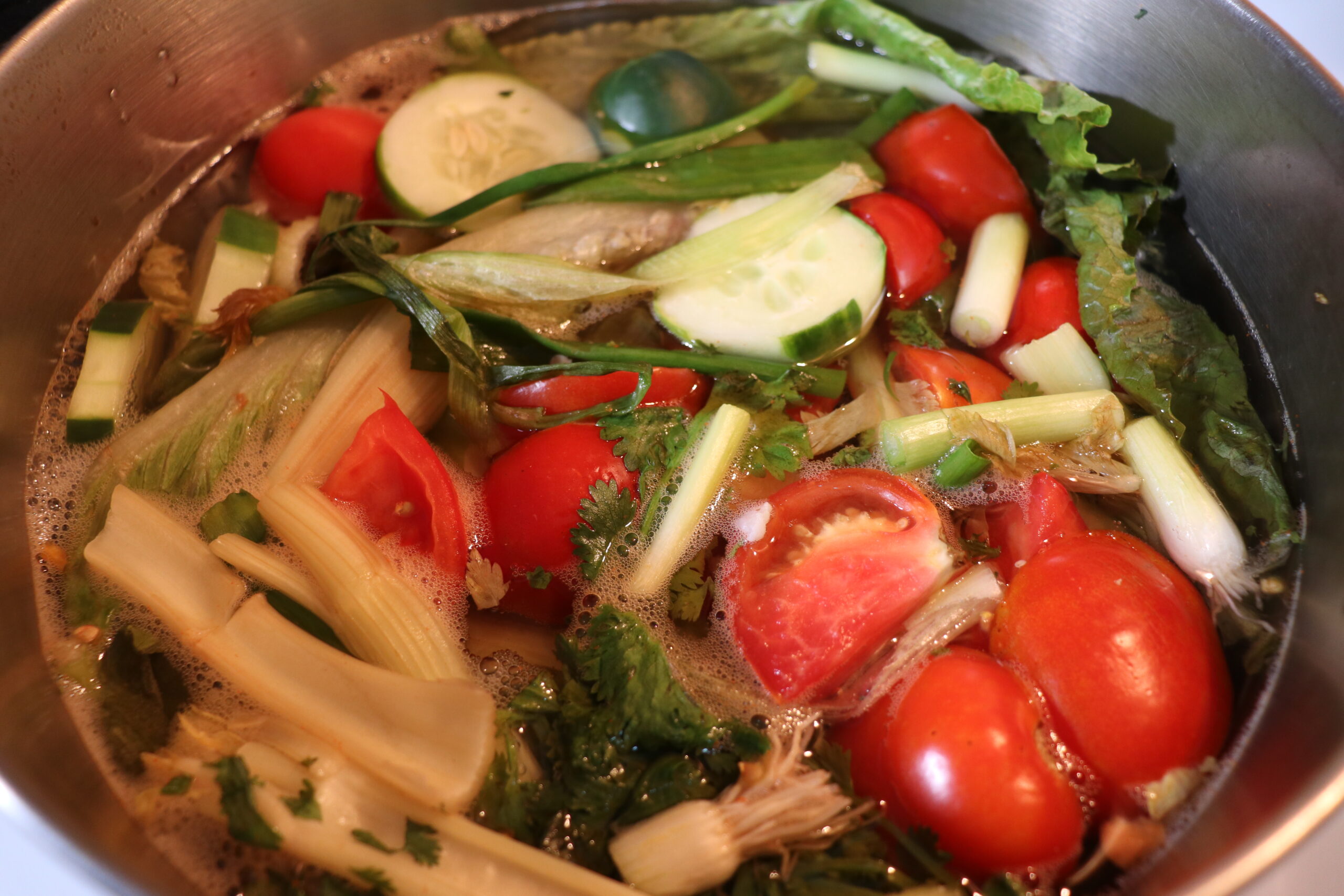
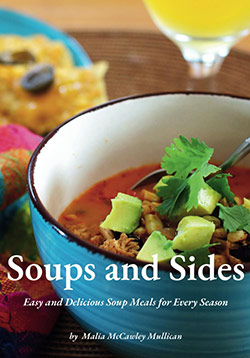












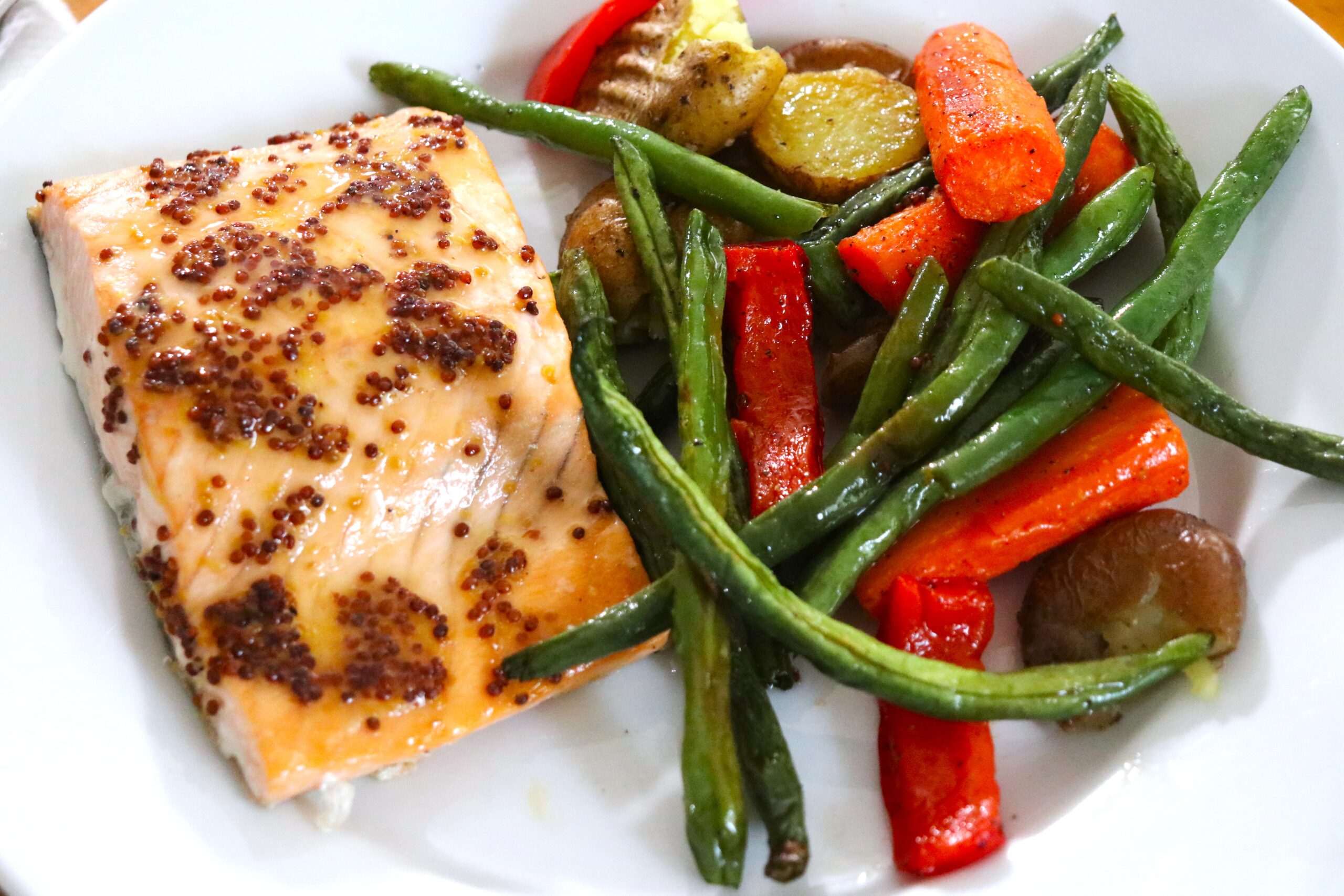
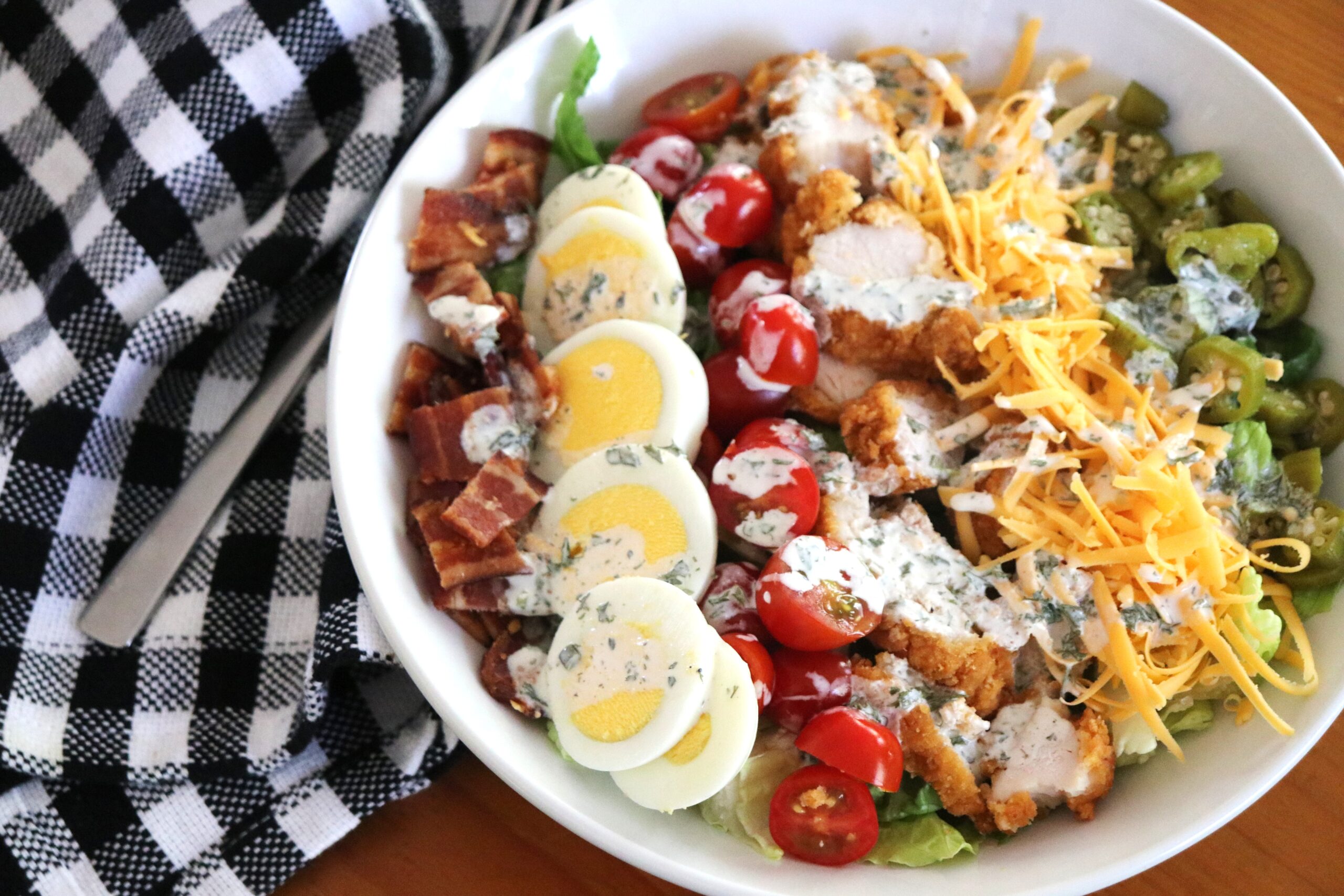

Several good and new-to-me ideas. Thanks. I usually do my chicken and vegetables together for a thick broth that seems to work well in most recipes and as a sickness tonic heated up with a fresh lemon squeezed in.
I am a crumbled bleu cheese fiend so I save those 4 oz flat containers for freezing broth. The frozen broth pops out of the containers easily and the hockey puck shape allows them to thaw quickly.
Mary Margaret, I’m thrilled to find another serial stock-maker! I also use the vegetable broth as a sort of tonic/tea. And those little containers you’re talking about? I’m going to start saving them for smaller quantities. Thanks for the inspiraton (Feta freak, here.)